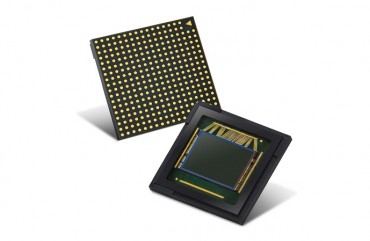
Cho Sung-hwan, CEO of Hyundai Mobis Co., delivers a speech during a media showcase at CES 2023 that kicked off in Las Vegas for a four-day run on Jan. 5, 2023. (Yonhap)
LAS VEGAS, Jan. 5 (Korea Bizwire) — Hyundai Mobis Co., a major South Korean auto components maker, said Thursday it has joined hands with Qualcomm Technologies Inc. to develop a Level 3 self-driving controller using the U.S. chipmaker’s chips, as it seeks to bolster the mobility segment.
Hyundai Mobis CEO Cho Sung-hwan made the announcement at the CES 2023 showcase, stressing the company’s mobility push as a core growth strategy that will redefine its identity in the future.
Under the initial agreement, Qualcomm will supply Hyundai Mobis with its Snapdragon Ride Platform to help it develop the software for the Level 3 autonomous driving controller.
Hyundai Mobis said it expects the development of the integrated controller to be completed in the first half of this year and will hopefully clinch more supply deals with global automakers.
Level 3 vehicles can detect environmental conditions and make decisions themselves, like whether to accelerate or decelerate and change lanes, but the driver must be ready to take control when the vehicle cannot perform certain tasks.
Level 3 is a jump from Level 2, also referred to as the advanced driver assistance systems (ADAS). ADAS enables the vehicle to control the steering and speed while the driver is required to sit in the driver’s seat to take over control of the car at any time.

Jeff Helner, head of steering at Hyundai Mobis North America, gives a presentation on the company’s carbon neutrality strategy during a media showcase at CES 2023 in Las Vegas on Jan. 5, 2023, with Hyundai Mobis’ purpose-built vehicle (PBV) concept, M. Vision TO, behind. (Yonhap)
Hyundai Mobis, the auto parts-making affiliate of Hyundai Motor Group, has been developing independent autonomous driving software platforms for automakers.
It has recently teamed up with Ottopia, an Israeli startup, to develop a remote support solution for self-driving, targeting the fully autonomous Level 4 driving market.
At this year’s CES, Hyundai Mobis also unveiled its new purpose-built vehicle concept models for the first time.
M.Vision TO, an electrified self-driving vehicle, features cameras, radars and light detection and ranging (LiDARs) sensors that detect objects near the car’s surroundings.
It also comes with e-corner modules, designed for “crab driving,” whereby each wheel of the vehicle can rotate and move sideways — a unique feature instrumental in PBVs as it enables the vehicle to drive on narrow streets in cities.
Cheon Jae-seung, head of Hyundai Mobis’ Future Technology Convergence Institute, emphasized that reliable software and semiconductors are the key to core competitiveness of integrated solutions and future mobility solutions.
Also on display was M.Vision HI, designed for leisure and outdoor activities. The glass of the vehicle can be used as a large display screen to watch movies or shop online.
The vehicle also features gaze-assisted remote control technology that uses human eyes as the controller.
Other mobility technologies were exhibited, including a future cockpit integrated solution and LED grille lighting, along with the hologram augmented-reality heads-up display, a transparent display that presents data on the vehicle’s windshield so that the driver will not need to look away.
(Yonhap)






